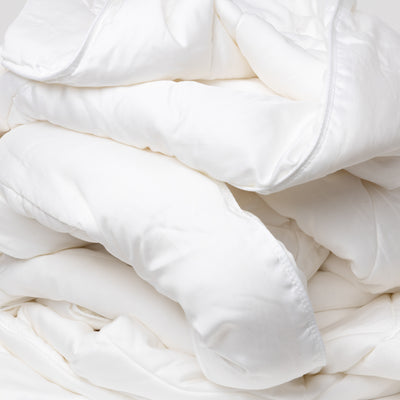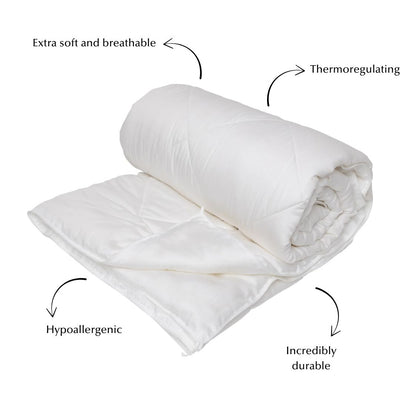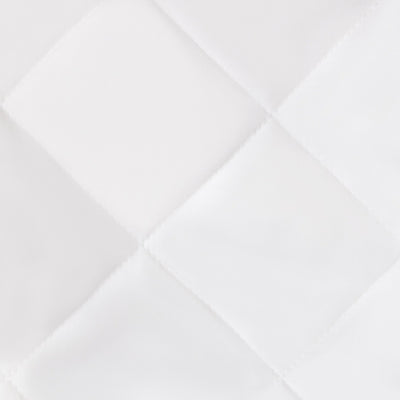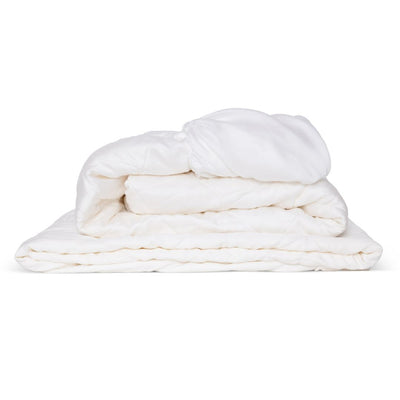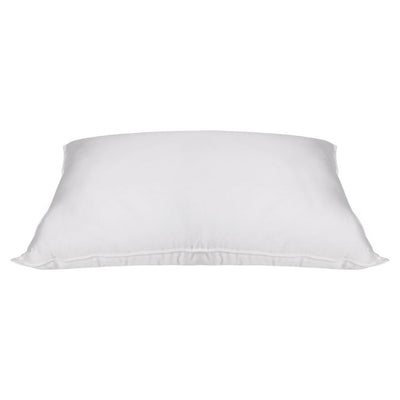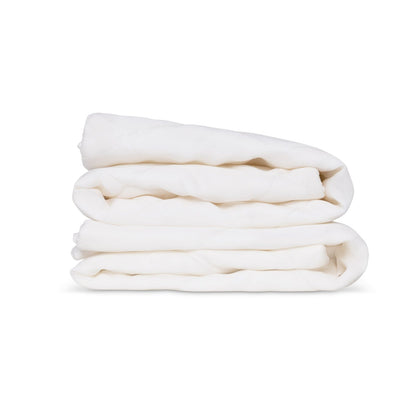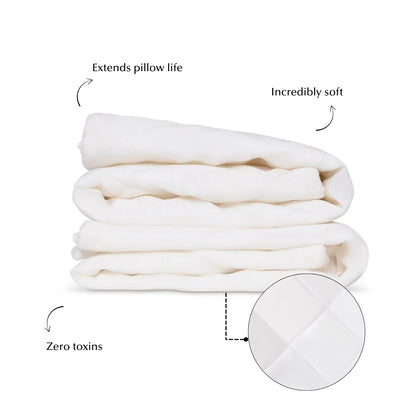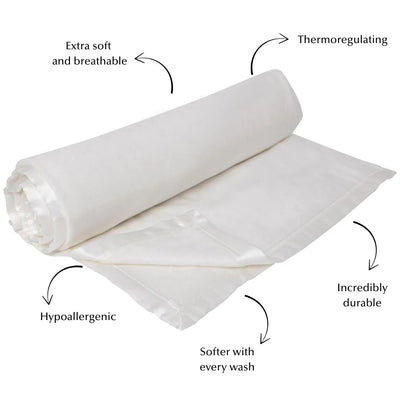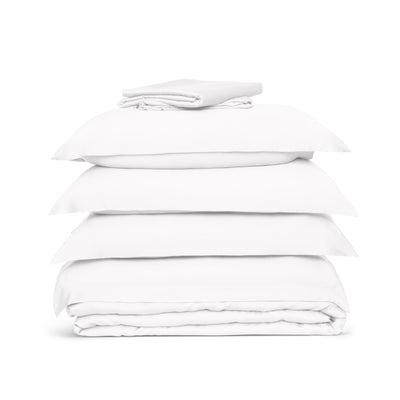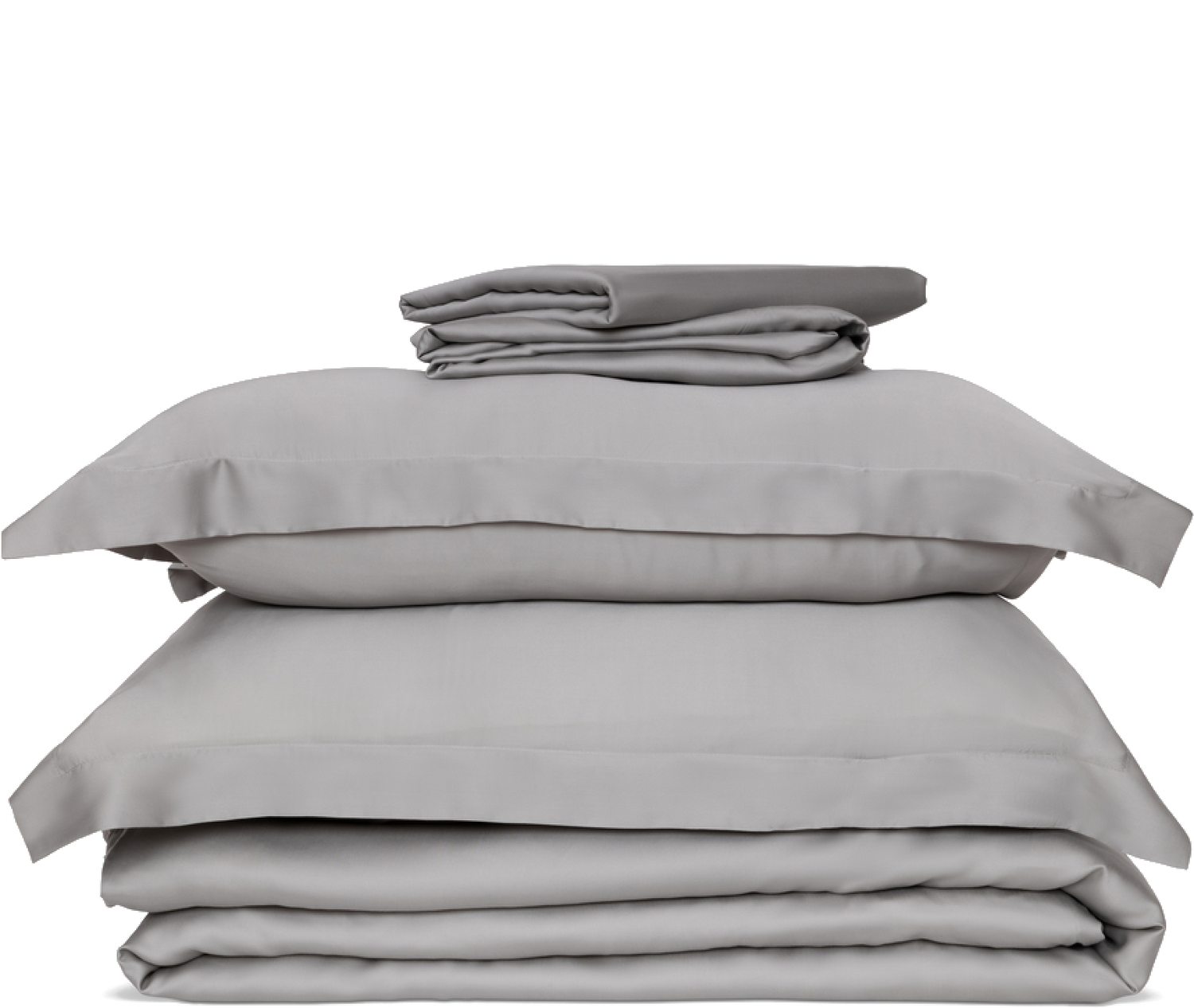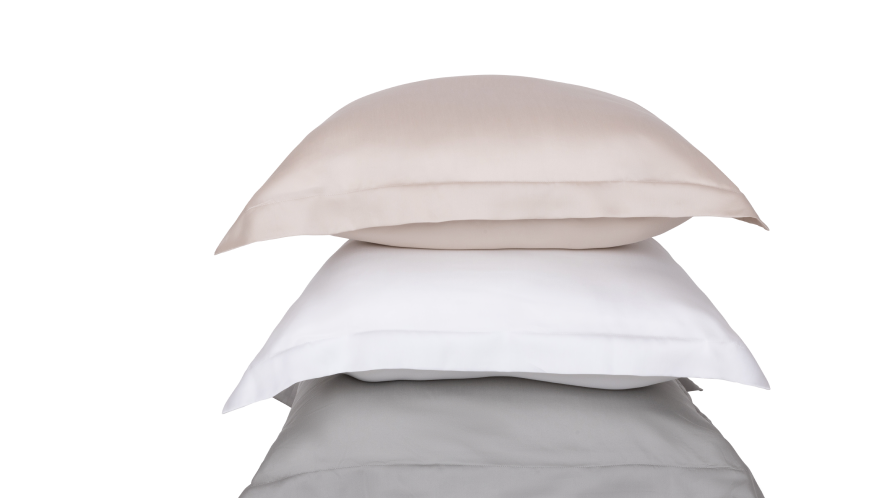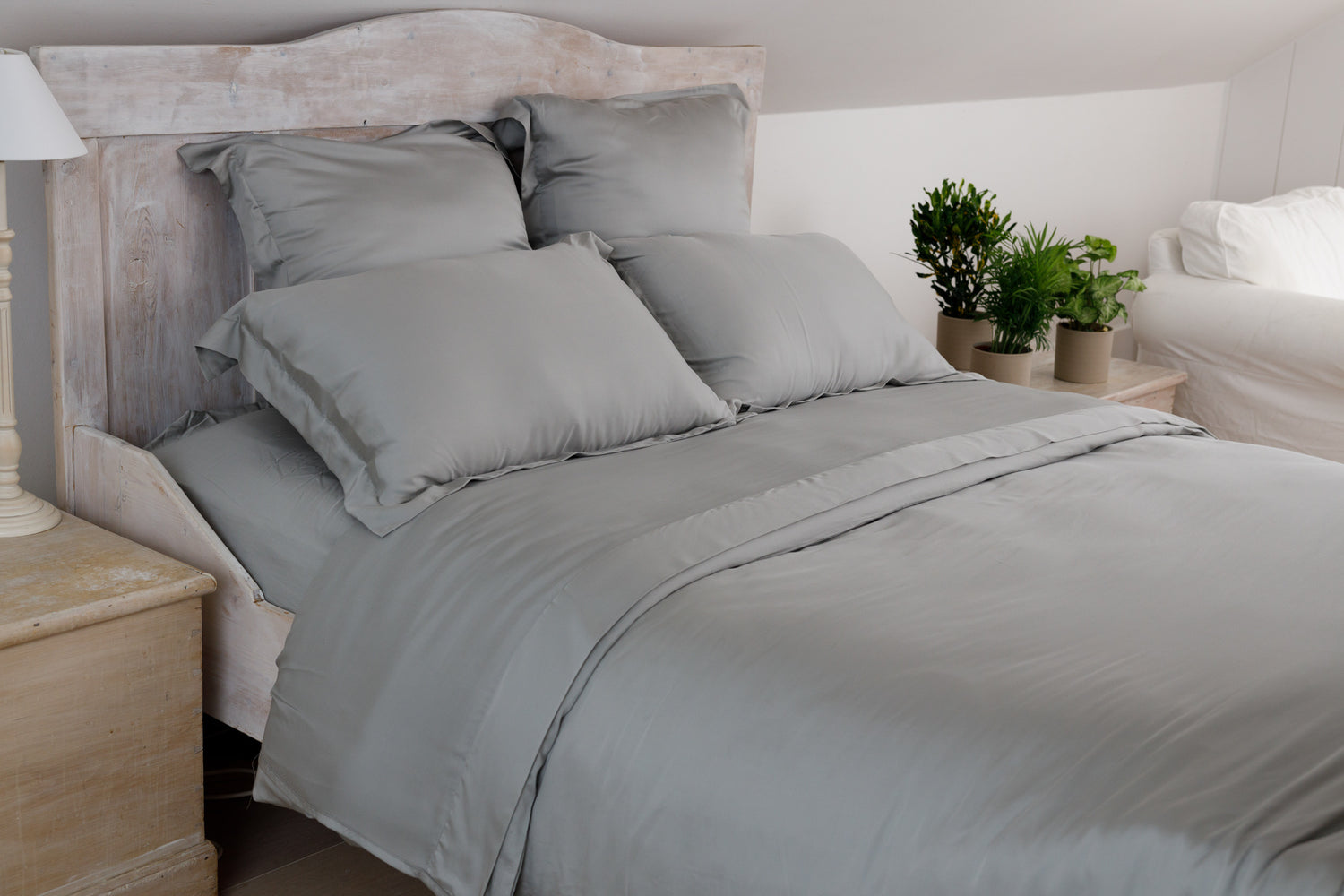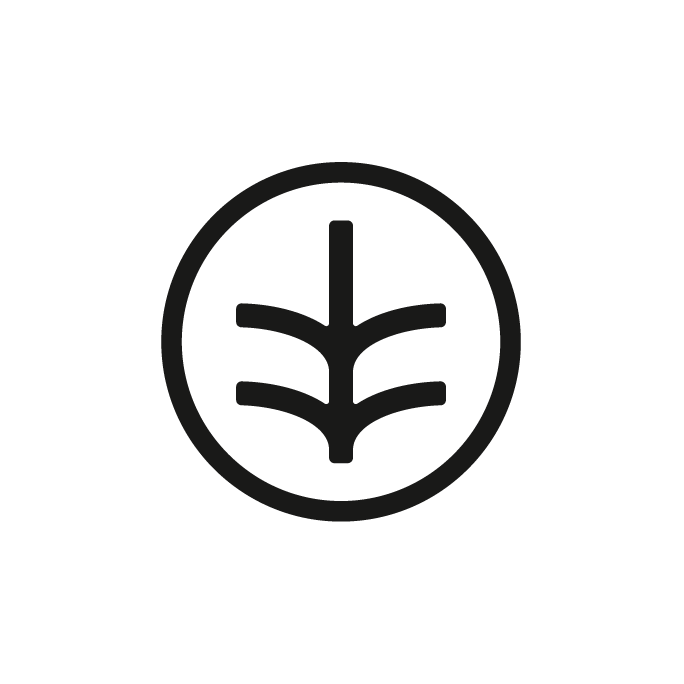Table of Contents
- EGYPTIAN COTTON EXPLAINED
- EGYPTIAN COTTON KEY QUESTIONS AND INFORMATION
- WHAT IS EGYPTIAN COTTON?
- HOW IS EGYPTIAN COTTON LABELLED?
- WHERE IS EGYPTIAN COTTON GROWN?
- SHOULD YOU BUY EGYPTIAN COTTON?
- HOW IS EGYPTIAN COTTON BEDDING MADE?
- WHAT ARE THE ALTERNATIVES TO EGYPTIAN COTTON?
- TENCEL™ VS EGYPTIAN COTTON - WHICH IS BETTER FOR BEDDING?
EGYPTIAN COTTON EXPLAINED
Famous for its silky texture and ability to get softer with every wash, Egyptian cotton has been in global demand since it was first developed in the early 19th century. Owning Egyptian cotton bedding, clothes and towels has become a symbol of luxury and taste. However, as public interests turn to sustainability and ethical purchasing, what does the future hold for Egyptian Cotton?
We have taken the guesswork out of Egyptian cotton and answer some of the most common Egyptian Cotton questions we get asked.
WHAT IS EGYPTIAN COTTON?
Authentic Egyptian Cotton comes from a species of plant known as Gossypium Barbadense. The fertile banks of the Nile River provide the ideal location for the luxurious cotton plant to thrive with a hot climate, abundance of water and unique chemical composition of soil.
Unlike other species of cotton plants, the Gossypium Barbadense produces extra-long-staple (ELS) cotton fibres of at least 1 3/8 inches. These fibres are handpicked from the field to keep them straight and stop them getting broken. The long, straight fibres are the key to the softness of Egyptian cotton. They are spun into stronger and more consistent yarns which are then weaved into smooth Egyptian cotton sheets.
HOW IS EGYPTIAN COTTON LABELLED?
Traditionally, an Egyptian cotton label meant that the fabric was guaranteed to be made from extra-long-staple cotton fibres of Gossypium Barbadense grown in Egypt. Unfortunately, the meaning of ‘Egyptian cotton’ has been corrupted and the label has taken on several new meanings.
Egyptian cotton is now incorrectly used as a marketing term to include any cotton that is grown in Egypt. Shorter cotton fibres, that are easier and cheaper for farmers to grow, are being made into lower quality fabrics while still being sold under a banner of luxury. Despite the higher price tags, buyers will soon notice that their luxury bedding isn’t as exquisite as they hoped.
Many fabrics on the market do genuinely contain Egyptian cotton. However, the finished product may contain only a fraction of the good stuff as it is woven with cheaper materials such as lower grade cotton, polyester or nylon. Unfortunately, the presence of Egyptian cotton isn’t enough to stop these fabrics pilling and quickly declining in quality.
Another loophole that manufacturers of ‘Egyptian cotton’ products have found is using genuine ELS cotton fibres of Gossypium Barbadense that have been grown somewhere other than Egypt where conditions are not as optimal. While customers may only detect a slight difference in the quality of their products, the practice has been disastrous for the Egyptian economy.
Although many countries have labelling regulations, a large number of products claiming to be Egyptian cotton go unchecked. Markets are plagued with labelling fraudulence including some claims of 100% Egyptian cotton that turn out to be entirely polyester!
WHERE IS EGYPTIAN COTTON GROWN?
Despite its notoriety, Egypt contributes to `only a small percentage’ of global cotton production and only a fraction of that will be ESL Gossypium Barbadense. While Egypt took 24th place, the world’s top cotton producers in 2019 were India, China and the United States. These three nations were also the top producers of ELS cotton.
SHOULD YOU BUY EGYPTIAN COTTON?
Confusion over Egyptian Cotton labelling makes it difficult for customers to know where their fabrics are coming from or what materials they contain. When customers invest in Egyptian cotton bed sheets, they may be paying luxury prices for sub-standard products.
The cotton industry is also rife with exploitation. A 2018 report highlighted the use of child labour and forced labour in multiple of the top cotton producing countries including China, Brazil, India and Uzbekistan. Without knowing the exact source of your Egyptian cotton bed sheets, it’s possible your purchase is contributing to unethical practices.
HOW IS EGYPTIAN COTTON BEDDING MADE?
The first stage of Egyptian cotton sheet production is planting and harvesting. This step includes the widespread use of pesticides to kill the Egyptian cotton leafworm. The pesticides are detrimental to eco-systems as they damage multiple non-target species. Cotton field workers are also at risk of developing cancers and health problems as a direct result of pesticide use.
The second stage is where cotton is transported to factories both in Egypt and across the world where it can be transformed into the highly sought-after Egyptian cotton bed sheets that have become so popular.
The process of cotton production uses an enormous amount of water. In fact, 2.6% of the global water usage is for cotton production. Sustainable methods of cotton farming have been developed that dramatically reduce the amount of water usage. However, cotton farming in Egypt still relies on irrigation systems set up in the 1800s. Changes in irrigation are unlikely to come about soon as installing and maintaining new systems would be too expensive for individual farmers.
Comparatively, Tencel™ uses 95% less water and far less land than cotton production. As well as zero herbicides and pesticides.
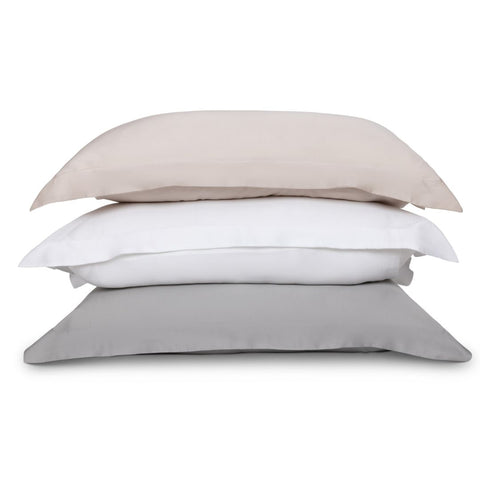
Interested in an eco-friendly bedding alternative? Get started by using code SILKY10 on our Eucalyptus Silk Pillowcases to get 10% off!
WHAT ARE THE ALTERNATIVES TO EGYPTIAN COTTON?
Despite a range of ethical and sustainable alternative bed sheet options on the market, legitimate Egyptian cotton generally maintains an edge when it comes to luxury. There is, however, one alternative which ticks all the boxes. Tencel™ is an ethical and sustainable option for bedding that is also unmatched in quality and desirable bedding properties.
Tencel™ is a brand specialising in Lyocell, a material made from cellulose fibres in a closed loop production process. Wood pulp sourced from sustainably managed plantations is dissolved with solvents before being pushed through holes to form the threads that can be spun into yarn.
The process to create Tencel™ uses less energy and water than in cotton production and the solvents used are recycled each time to minimise waste.

Shop our 100% Eucalyptus Sheet Bundle
TENCEL™ VS EGYPTIAN COTTON - WHICH IS BETTER FOR BEDDING?
Egyptian cotton has achieved luxurious notoriety for a reason. Compared to other cottons and natural materials, it has exceptional levels of softness, durability, and strength. However, it is not perfect.
Egyptian cotton can be damaged by softeners and hot washes; it is prone to wrinkling and customers need to be vigilant to make sure they are buying the real thing. While there is no need to throw away your trusty Egyptian cotton bedding, it is worth gradually investing in equally luxurious but more sustainable alternatives.
Tencel™ is known to match and even exceed levels of softness and strength. The fabric can effectively absorb moisture which not only makes is cool and dry on the skin, it also prevents the growth of bacteria on sheet surfaces. The breathable, durable, and wrinkle-resistant properties of this material make it the ideal choice for bed sheets.

Shop Ethical Bedding's wrinkle-resistant Tencel flat sheet
Shop all our Tencel bedding here.

